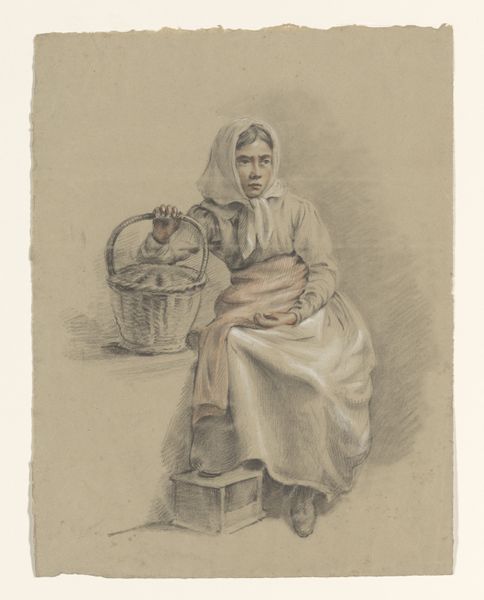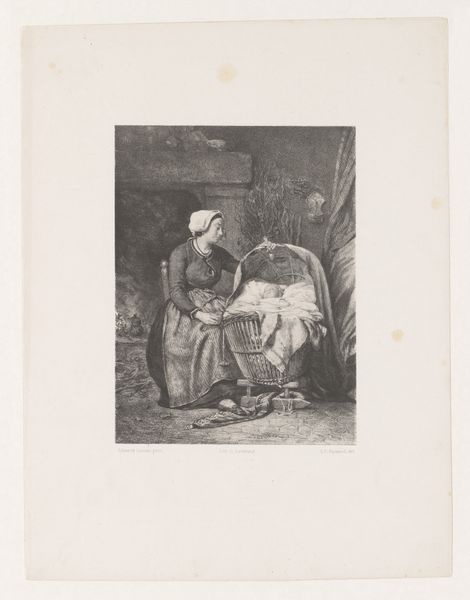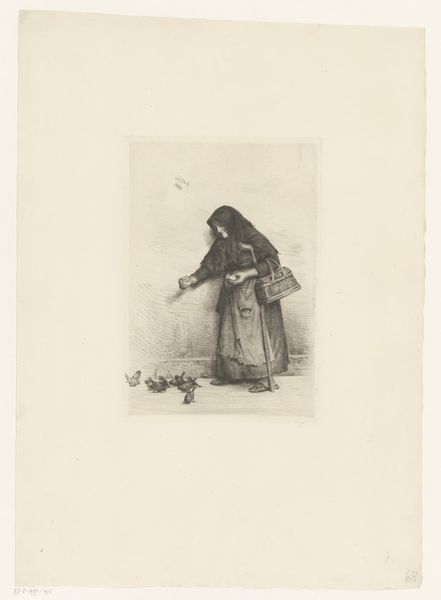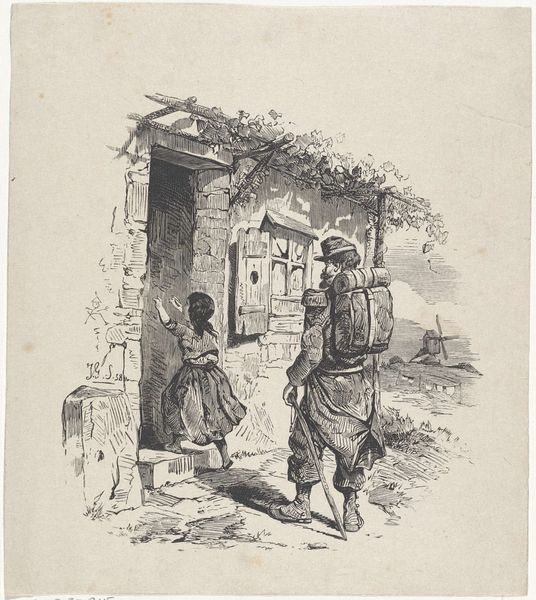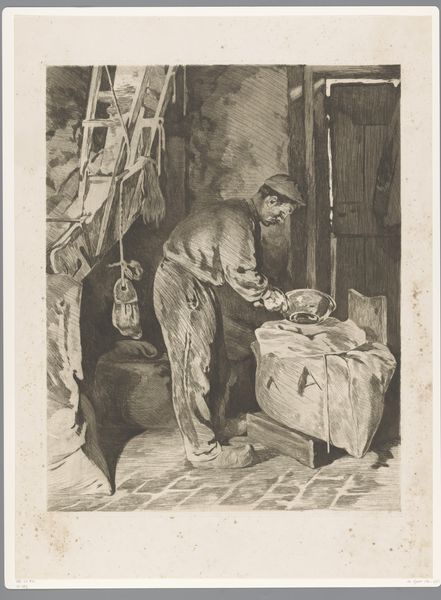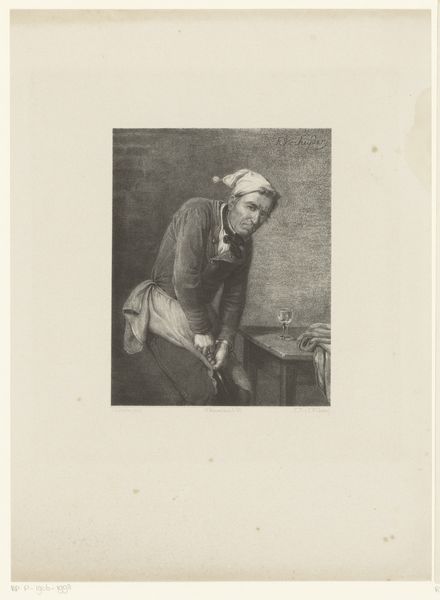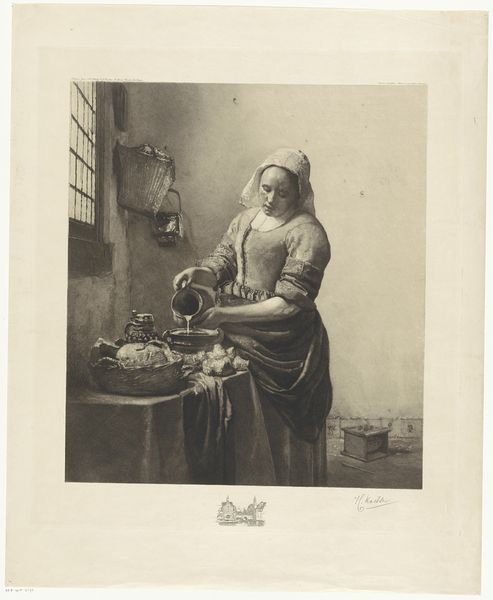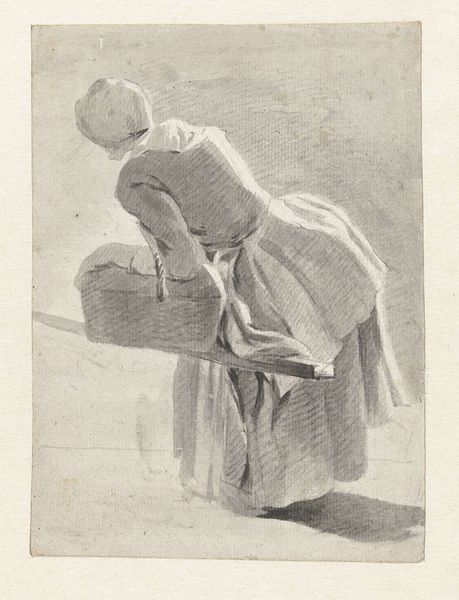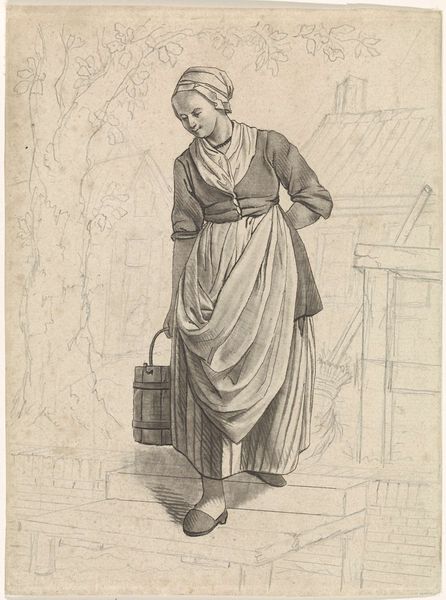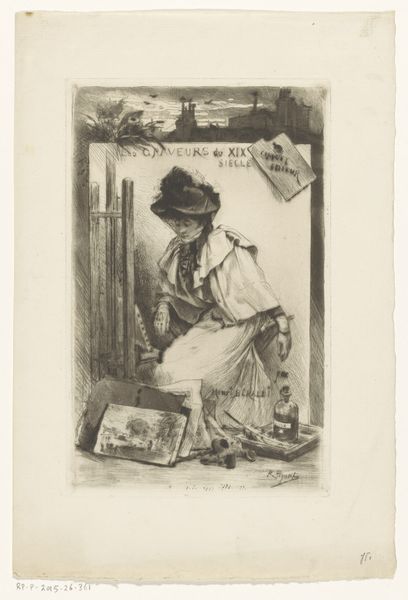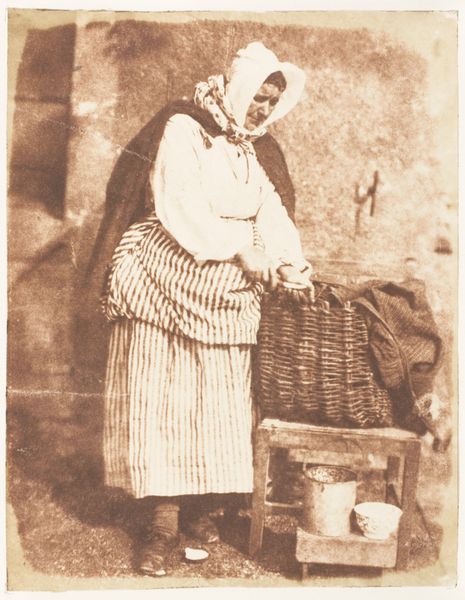
photography, gelatin-silver-print
#
portrait
#
african-art
#
landscape
#
photography
#
ancient-mediterranean
#
orientalism
#
gelatin-silver-print
#
genre-painting
#
realism
Dimensions: height 139 mm, width 90 mm
Copyright: Rijks Museum: Open Domain
Editor: Here we have a gelatin silver print from before 1914, currently housed in the Rijksmuseum. It’s titled "Portret van een Egyptische waterdrager," or "Portrait of an Egyptian Water Carrier". The image evokes such a strong sense of place and the labor involved in daily life. How do you interpret this work? Curator: It's interesting how this photograph engages with Orientalism, a 19th-century Western fascination with the "exotic" East. The photograph presents a seemingly objective view of Egyptian life, yet we have to ask, who took this photo and for what purpose? These images were often used to reinforce colonial power structures. Editor: That's fascinating, I hadn't considered the photographer's role in shaping the narrative. It does seem to present a very specific image. How might its context affected its creation? Curator: Think about the rising popularity of photography and mass media at the time. Images like these could be circulated widely, shaping Western perceptions of Egypt and reinforcing stereotypical notions of the "other." The photograph serves as a historical artifact that reflects how European culture constructed its views of North Africa. We must remember these were constructed realities with a particular point of view and often supported imperialism. Editor: So, it’s less a simple depiction and more of a cultural exchange – a projection, even. I wonder, how aware was the photographer of this potential bias? Curator: That’s a complex question! It is essential to analyze art through its institutional background, taking into consideration who is given the space, funding and opportunity to have such art made. What seemed ‘natural’ at the time can often, with hindsight, reveal significant imbalance and unfairness. Editor: It gives me a lot to consider - to look beyond the surface and consider the historical context that informs both its creation and its reception. Thank you for sharing your perspective! Curator: It's important to keep those questions alive and continue to examine the power dynamics inherent in art history. It challenges us to examine history through new lenses and perspectives.
Comments
No comments
Be the first to comment and join the conversation on the ultimate creative platform.


